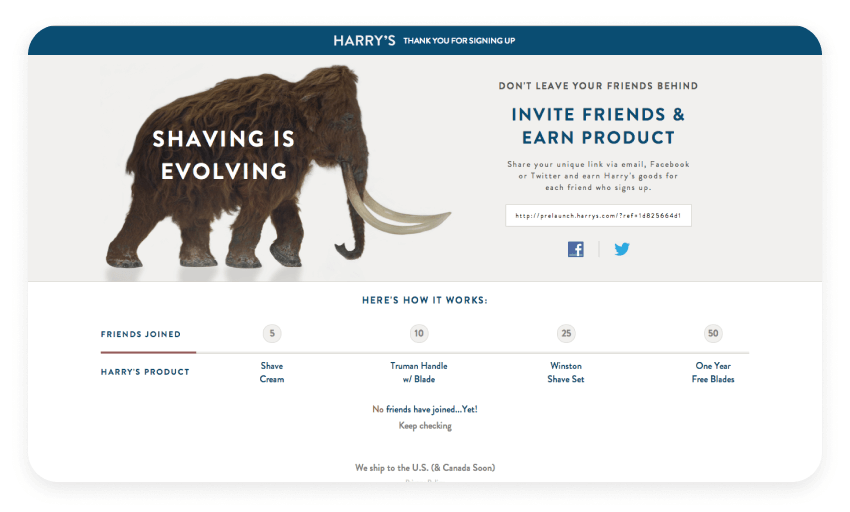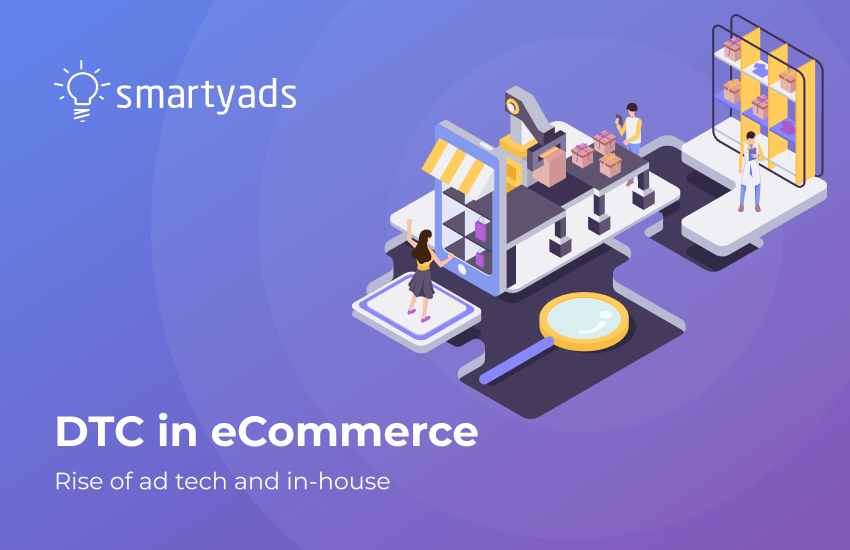Technologies merge, platforms consolidate and brands are looking for fresh and more direct ways to communicate with their consumers. One of the most prominent shifts has been made in eCommerce recently. eCommerce companies apply a D2C approach - direct-to-consumer advertising which makes using Ad tech personalization tools a must. To explain what this shift means for advertisers, especially for those working in eCommerce, let us explore how D2C works and what benefits it delivers.
What is DTC and how does it work?
D2C - direct-to-consumer means that the company advertises and sells its products or services directly to their clients without intermediaries (like TV, radio, newspapers). It is different from B2C which relies on the retailer standing in between the provider and the consumer of the goods. Intermediaries can promote products of a multitude of companies, so manufacturers never know if customers choose their products over those offered by their competitors. In contrast, with the D2C approach companies have control over the whole process, including branding, customer experience, and the advertising strategy.
The growth of this strategy brings changes to the entire advertising landscape, even though the idea isn’t new. In the 15th century Venice a first mail-order catalog “Catalogues of Aldus's editions” was published in order to provide customers a direct opportunity to purchase one of the books offered via mail delivery. This is essentially what D2C marketing looks like today - customers buy products directly from manufacturers via the internet and receive them by mail without physical shops or other intermediaries.
The other illustrative examples of the D2C approach demonstrate Coca Cola campaigns (they still encourage their customers to register codes from under the bottle caps in exchange for prizes and other bonuses).
From the manufacturer’s point of view, the process looks slightly more complex. It requires the development of a new advertising strategy and executing it without the help of external marketers and retailers. This includes several additional steps that should be taken by manufacturers, as it is now their responsibility to maintain communication with the customer from start to finish.
However, such a strategy also promises a lot of potential benefits. For example, while interacting with clients, suppliers can also collect valuable data about who their customers are, what they like and which messages are the most compelling for them. The first-party data allows them to match their products to clients’ preferences. By optimizing an advertising campaign and enriching it with first-party data, companies can quickly make them effective.
The role of ad tech for direct campaigns
There are several key ad tech tools that eCommerce brands can use in order to create powerful D2C campaigns: DMP, Ad exchange, DSPs and SSPs, as well as targeting and retargeting tools. All of those serve different needs but have an essential role in building effective advertising campaigns. Here is a simple clarification of how these platforms and tools work and how can one apply them to the D2C eCommerce marketing:
- DMP - data management platform. Software created to collect, store, and analyze data about customers from various sources. This information can then be used to segment the audience according to different parameters, such as age, gender, interests, online behavior. With DMPs, manufacturers can analyze and use this data to understand and communicate with customers directly. Furthermore, it is very valuable in terms of integration with White label DSPs and Ad Exchanges, as the companies which collected the data sharpen their programmatic targeting.
- Ad Exchange – An open marketplace for media-trading between advertisers and publishers, often powered by programmatic algorithms/RTB to ensure fast workflow and global reach. With ad exchange, one can run and coordinate a media-trading environment with their trusted partners. And for those who don't want to build the whole platform from scratch and already have their own demand, White Label Ad Exchange such as SmartHub can help find more supply and even become an additional revenue source.
- DSP - demand-side platform and SSP - supply-side platform; platforms that can be used by advertisers and publishers respectively in order to buy and sell advertising inventory via ad exchanges based on certain criteria and their marketing goals.
- SSPs are usually used by publishers to get profit from brands that use DTC campaigns and personalize the ads for each website visitor. This provides publishers with an opportunity to build trust and foster the loyalty of their readers.
- DSPs are used by advertisers and brands to find publishers. Through their sites and apps, advertisers can establish direct communication with users. DSPs help to communicate users directly on all mediums, including mobile, in-pp, desktop, audio channels or CTV.
- Targeting; With the information collected from DMP, brands can segment their audience and evaluate which messages work better for one or another segment. This data gives an incredible opportunity to target customers precisely at the right moment of their customer journey and achieve even more profits.
- As it can sometimes be not enough to rely solely on brand awareness campaigns, a wise marketer would include targeting into their campaigns. It is especially beneficial for eCommerce where most brands already have lots of data to be used as a basis for targeting campaigns. And, of course, targeting is a must for DTC, as it helps companies to identify their audience and promote their product or service without the help of retailers.
- Retargeting; As it is much easier to return someone who already bought a product than to find new customers. Thus, DSP retargeting feature becomes an indispensable tool for the advertising campaign as it helps to ensure brand loyalty by returning customers.
- Retargeting is mostly used by eCommerce - small or huge online retailers who are trying to win their customers back and establish stable relationships with them. Retargeting is a powerful tool when it comes to DTC campaigns, as manufacturers can communicate to their clients directly and build trust, especially if this is not their first DTC campaign.
DTC and ad tech cooperation on practice
There are several examples of successful usage of ad tech tools by brands for their D2C campaigns, among which are The Huggies from the Kimberly-Clark. This international company specializes in healthcare and hygiene products and one of their key audience segments is mothers with newborns. As a huge part of them use the Internet on a daily basis, Kimberly-Clark recognized digital advertising as an integral channel for communication with customers. In 2015, their D2C strategy included free sampling through playgrounds and hospitals, so that mothers would stay with the product they tried. In 2017 they have developed a digital version of the same strategy, where young mothers would receive promotions for a trial package after a quick registration on the website. Finally, their current D2C strategy developed into what is now a huge system of rewards available in the mobile app.

Another case is “Harry’s” shaving razors, which promoted a wait-list before the official launching of their product. Moreover, people who signed up for wait-list were encouraged to invite their friends in exchange for various prizes provided by the company. The result is a pool of 100000+ potential customers gathered before the very launch of the product. This huge amount of data is a game-changer for a start-up as they already have a direct customer channel.

Why e-commerce should have an in-house AdTech solution
As we can see now, eCommerce gradually shifts to ad tech, as brands see in it a great opportunity to create relevant D2C campaigns. Although it might seem like a huge challenge at the beginning, an in-house ad tech solution is a great chance to avoid intermediaries and save costs. Additionally, when combined with first-party data, in-house ad tech solutions help to build stronger relations with customers as data in them becomes proprietary.
To make the shift to in-house ad tech solutions easier, companies can use the white-labeled advertising and marketing products to get a finished solution customized for their business goals in a short time and without difficulties.
To sum up
Approaches and strategies may vary and brands are constantly coming up with new ones to achieve market domination, but the one thing remains certain. Ad tech platforms give a huge advantage to D2C brands in the world of digital advertising, as they provide an opportunity to get multiple benefits in addition to profits from their actual product or service. An in-house programmatic solution integrated via white-label can help companies to get independence in terms of media buying transparency, system accountability, and data ownership.




